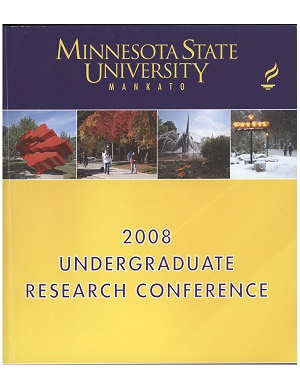Priming the Bicultural Mind
Location
CSU Ballroom
Start Date
21-4-2008 10:00 AM
End Date
21-4-2008 12:00 PM
Student's Major
Psychology
Student's College
Social and Behavioral Sciences
Mentor's Name
Vinai Norasakkunkit
Mentor's Department
Psychology
Mentor's College
Social and Behavioral Sciences
Description
This study was the last phase of developing standardized cross-cultural priming method which had been conducted since 2003 targeting, especially, Americans and Japanese. According to numerous studies, Westerners (e.g., Americans, Canadians) and Easterners (e.g., Japanese, Chinese) have different patterns of thinking, analytic and holistic, respectively, which influence how individuals perceive the world, and how these perceptions affect their social behaviors. Priming enables one to temporarily activate specific patterns of thought, in this case, from analytic to holistic or vice versa. Although some priming methods had been developed, either using visual approach or verbal approach, they were not equally as effective for both Westerners and Easterners. However, the continuous studies up to the last phase had had partial success in developing a new priming method, which equally applied to both Westerners and Easterners, by combining visual and verbal approaches. Examining the impact of these priming procedures on Japanese biculturals along with Japanese in Japan and Americans in the US was predicted to give a more complete picture of how effective the priming procedures were. In the current research, Japanese students recruited from both Minnesota State University, Mankato and St. Cloud State University were randomly assigned to four different priming methods followed by three measurements which assessed the impact of priming. Then, the collected data were analyzed to test whether the finding from the previous phase of this study also holds true for Japanese biculturals with the anticipation that the new pictorial priming method would effectively work for both Westerners and Easterners.
Priming the Bicultural Mind
CSU Ballroom
This study was the last phase of developing standardized cross-cultural priming method which had been conducted since 2003 targeting, especially, Americans and Japanese. According to numerous studies, Westerners (e.g., Americans, Canadians) and Easterners (e.g., Japanese, Chinese) have different patterns of thinking, analytic and holistic, respectively, which influence how individuals perceive the world, and how these perceptions affect their social behaviors. Priming enables one to temporarily activate specific patterns of thought, in this case, from analytic to holistic or vice versa. Although some priming methods had been developed, either using visual approach or verbal approach, they were not equally as effective for both Westerners and Easterners. However, the continuous studies up to the last phase had had partial success in developing a new priming method, which equally applied to both Westerners and Easterners, by combining visual and verbal approaches. Examining the impact of these priming procedures on Japanese biculturals along with Japanese in Japan and Americans in the US was predicted to give a more complete picture of how effective the priming procedures were. In the current research, Japanese students recruited from both Minnesota State University, Mankato and St. Cloud State University were randomly assigned to four different priming methods followed by three measurements which assessed the impact of priming. Then, the collected data were analyzed to test whether the finding from the previous phase of this study also holds true for Japanese biculturals with the anticipation that the new pictorial priming method would effectively work for both Westerners and Easterners.
Recommended Citation
Fjuikata, Miwako. "Priming the Bicultural Mind." Undergraduate Research Symposium, Mankato, MN, April 21, 2008.
https://cornerstone.lib.mnsu.edu/urs/2008/poster-session-A/14




